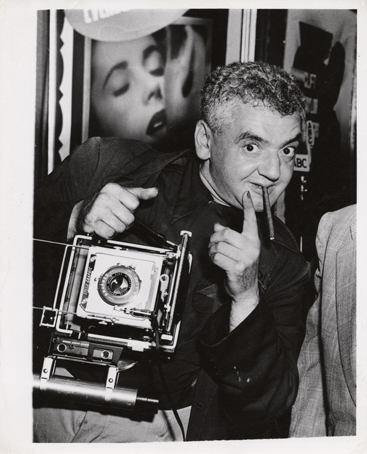
Hollywood (ca. 1950)
Unidentified Photographer
The photographer Arthur Fellig, known professionally as Weegee, rarely appeared without camera in hand and cigar in mouth. In this vivid portrait, Weegee raises his left finger while balancing his large camera against his leg. Floating above the photographer, a poster shows a dreamy, perfectly made-up Elizabeth Taylor on the verge of kissing Montgomery Clift, Taylor's costar in the drama A Place in the Sun (1951). Weegee exploits the incongruity between the poster's Hollywood glamour and his own quirky, decidedly nonromantic appearance in the foreground.
International Center of Photography, Bequest of Wilma Wilcox, 1993 © Weegee/International Center of Photography/Getty Images
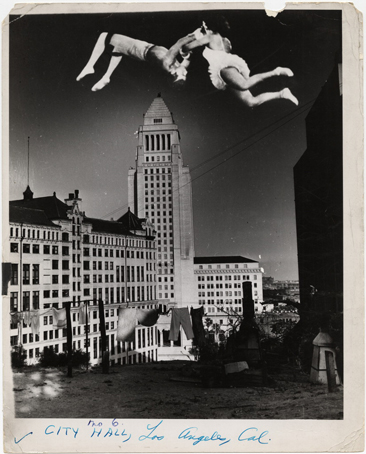
City Hall, Los Angeles, Cal (ca. 1953–55)
Weegee
Alongside spontaneous or “news†photographs made in the field, Weegee also practiced various darkroom techniques that allowed him to construct surreal or nonsensical images. In this instance, Weegee combines elements from multiple negatives into a single print, causing two trapeze artists to appear to hurtle through the air above L.A.'s city hall.
International Center of Photography, Bequest of Wilma Wilcox, 1993 © Weegee/International Center of Photography/Getty Images

The Gold Painted Stripper (ca. 1950)
Weegee
Many of Weegee's Hollywood photographs take the viewer backstage or behind the scenes. In this photograph, an offstage burlesque dancer in shimmering body paint pauses for a drink while the figure in the background shields his face from Weegee's flashbulb.
International Center of Photography, Bequest of Wilma Wilcox, 1993 © Weegee/International Center of Photography/Getty Images
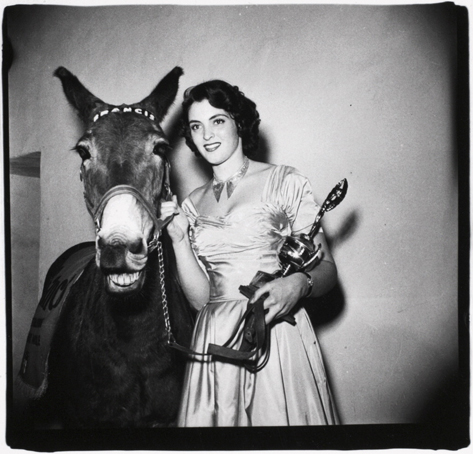
Animal “Oscars†(ca. 1951)
Weegee
Among Weegee's photographs of Hollywood events are several taken at the inaugural PATSY Award ceremony held at the Carthay Circle Theater on March 6, 1951. An annual function sponsored by the Humane Society of United States, the award recognized the film industry's animal talent. Pictured here is the award winner of 1951, the eponymous star of Francis the Talking Mule.
International Center of Photography, Bequest of Wilma Wilcox, 1993 © Weegee/International Center of Photography/Getty Images

Hollywood Premiere (ca. 1951)
Weegee
Snapped at the sidelines of a movie premiere, this photograph speaks to Weegee's belief that “sometimes the reaction of people is more interesting than the incident itself.†Through the faces of fans hoping for celebrity autographs, the picture captures the excitement of the moment while leaving the celebrities themselves outside the frame.
International Center of Photography, Bequest of Wilma Wilcox, 1993 © Weegee/International Center of Photography/Getty Images
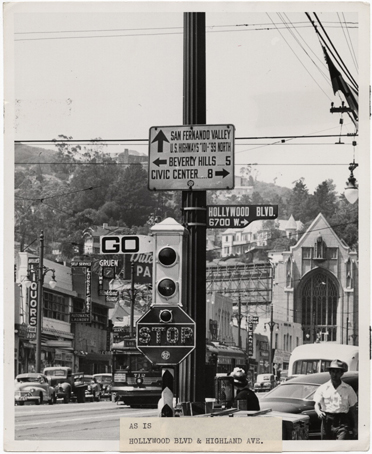
As Is: Hollywood Blvd & Highland Ave. (ca. 1950)
Weegee
Weegee photographs an iconic Hollywood street corner: the intersection of Hollywood and Highland. The corner now houses an upscale shopping mall as well as the Kodak Theater, the lavish auditorium in which the Academy Awards are held. The Hollywood United Methodist Church, seen in the background, still stands at the corner of Franklin and Highland today.
International Center of Photography, Bequest of Wilma Wilcox, 1993 © Weegee/International Center of Photography/Getty Images
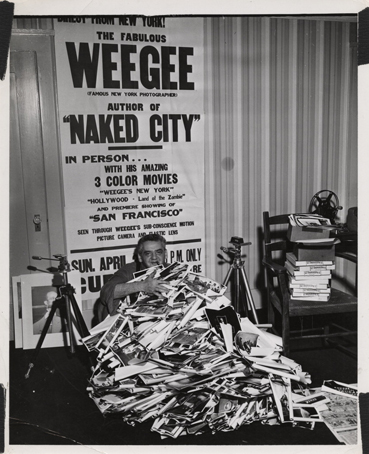
Weegee in His Hollywood Studio (ca. 1951)
Unidentified Photographer
Weegee is pictured in his Hollywood studio, buried under a large pile of the photographs he made while living in Los Angeles.
International Center of Photography, Bequest of Wilma Wilcox, 1993 © Weegee/International Center of Photography/Getty Images

Weegee Photographing Mannequins in L.A. Camera Exchange's Window Display (1951)
Unidentified Photographer
Weegee first circulated some of the images that would form Naked Hollywood in an issue of Modern Photography magazine from 1951 and, pictured here, a related exhibition at the L.A. Camera Exchange. A master of publicity and self-promotion, Weegee was adept at drawing attention to his work; in this case, he filled the gallery's display window with nude Decter mannequins and an outsized, tabloid-style headline.
International Center of Photography, Bequest of Wilma Wilcox, 1993 © Weegee/International Center of Photography/Getty Images
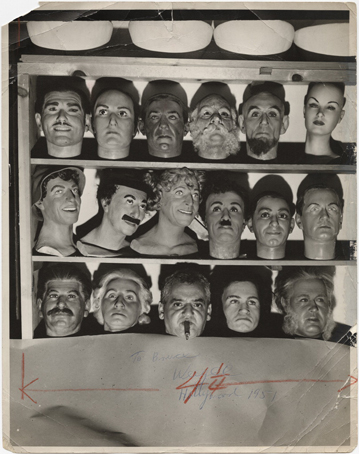
Weegee Among Wax Heads of Celebrities and Leaders (1951)
Unidentified Photographer
For this cleverly staged photograph, Weegee placed his own face amongst wax mannequin heads in a Hollywood prop house. There on the bottom shelf, below wax busts of the Marx Brothers and to the right of Joseph Stalin and Thomas Jefferson, we find Weegee looking back at us with fixed gaze, deadpan expression, and, of course, his lit cigar.
International Center of Photography, Bequest of Wilma Wilcox, 1993 © Weegee/International Center of Photography/Getty Images
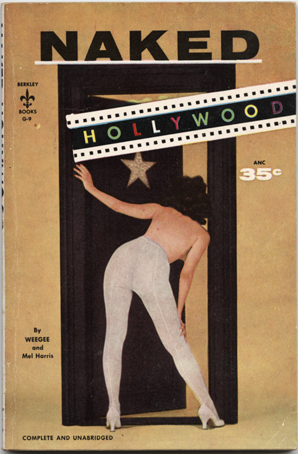
Naked Hollywood (1955)
Weegee with Mel Harris
Originally published in 1953, Naked Hollywood documents the celebrities and street scenes that Weegee shot during his roughly five-year sojourn in Los Angeles. Although promoted as “complete and unabridged,†this inexpensive paperback reprint of 1955 contained a slightly different selection of photographs and featured a more lurid cover than its predecessor.
© Weegee/International Center of Photography/Getty Images
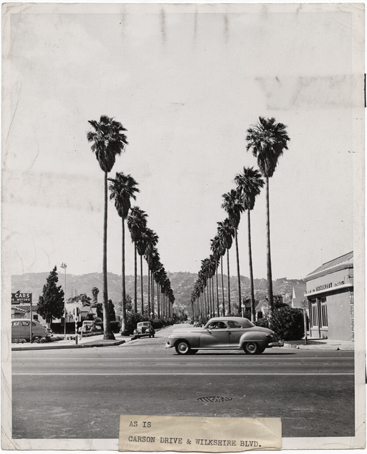
As Is: Carson Drive & Wilkshire [sic] Blvd (ca. 1950)
Weegee
In addition to photographing the people and places of Hollywood, Weegee was also interested in the environs of greater Los Angeles. Taken in Beverly Hills, this photograph captures three quintessential features of the city’s landscape: palm trees, rolling hills, and shiny automobiles. The designation “As Is” likely refers to the fact that this print has not been manipulated in the darkroom.
International Center of Photography, Bequest of Wilma Wilcox, 1993 © Weegee/International Center of Photography/Getty Images
























